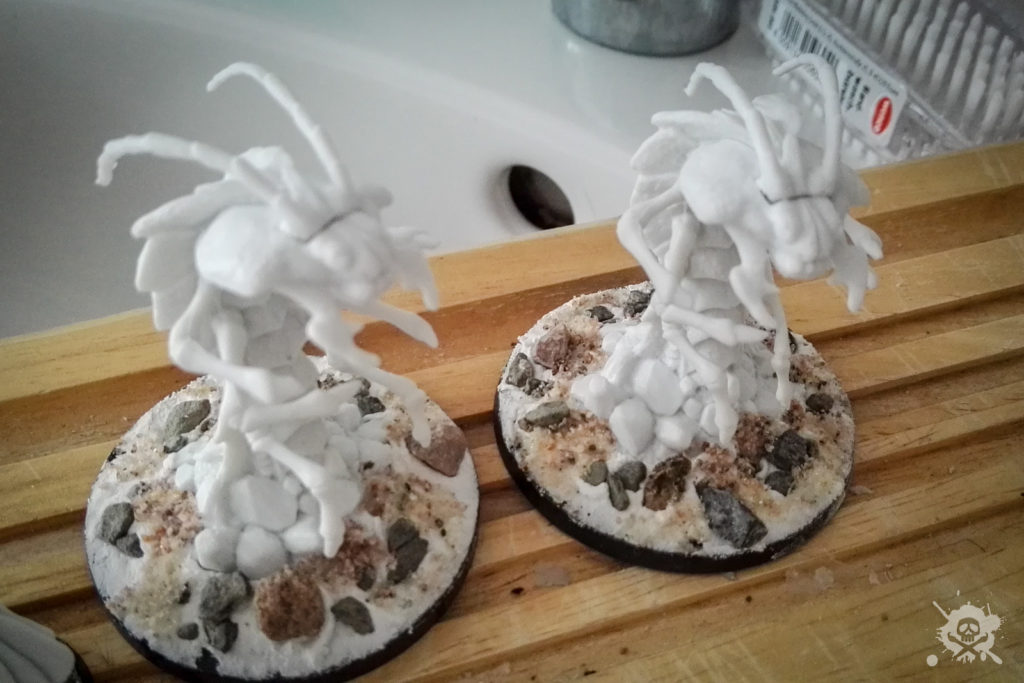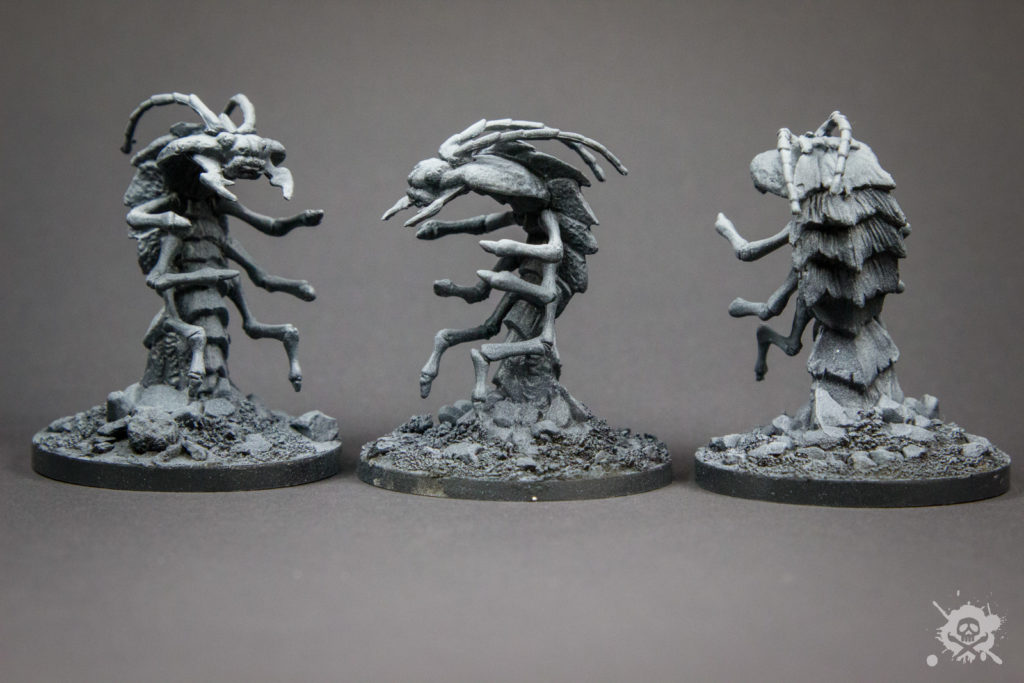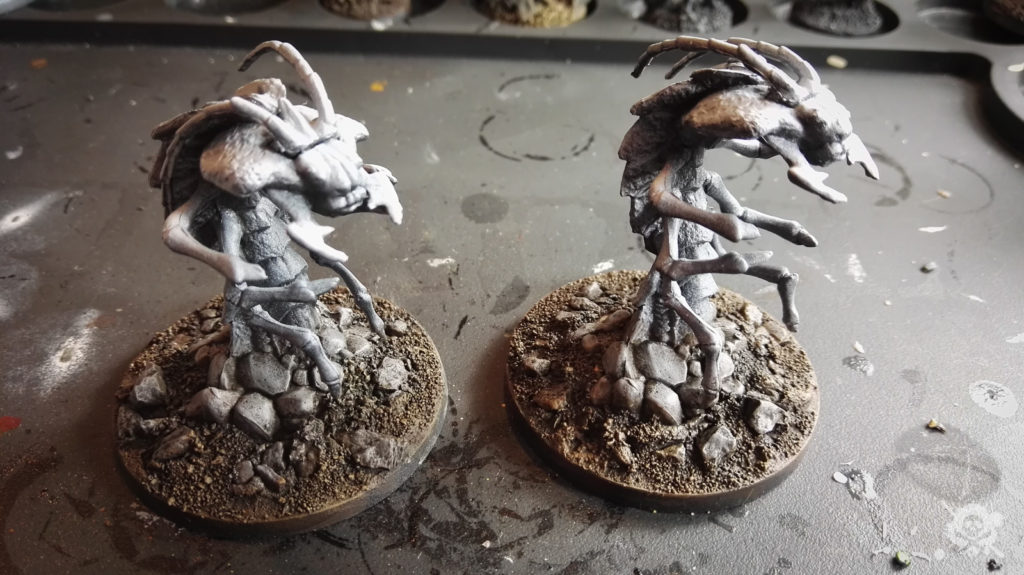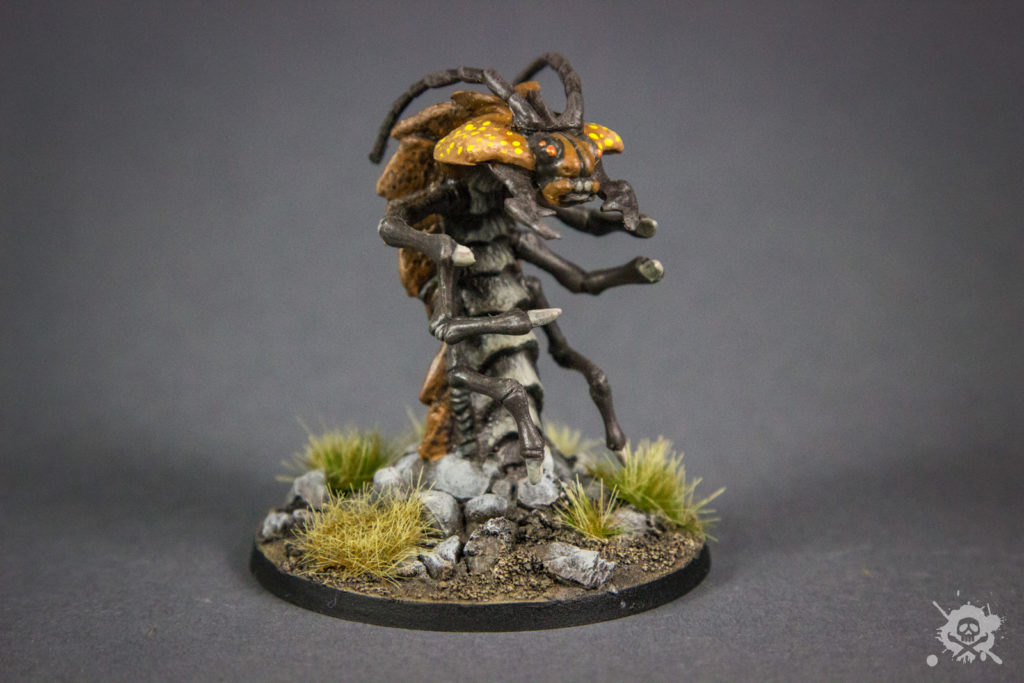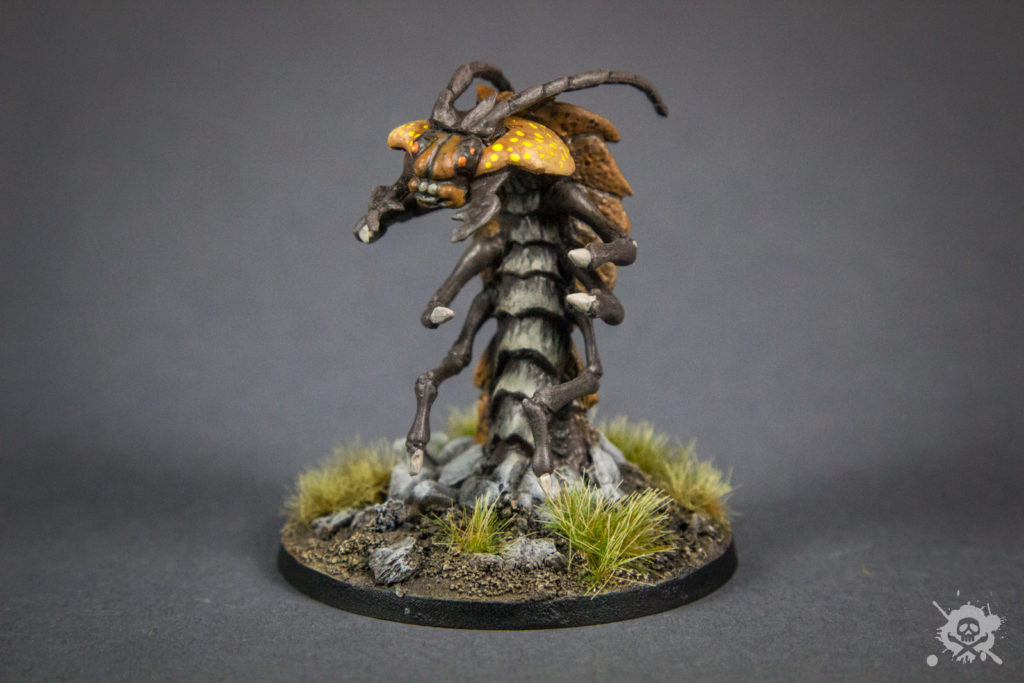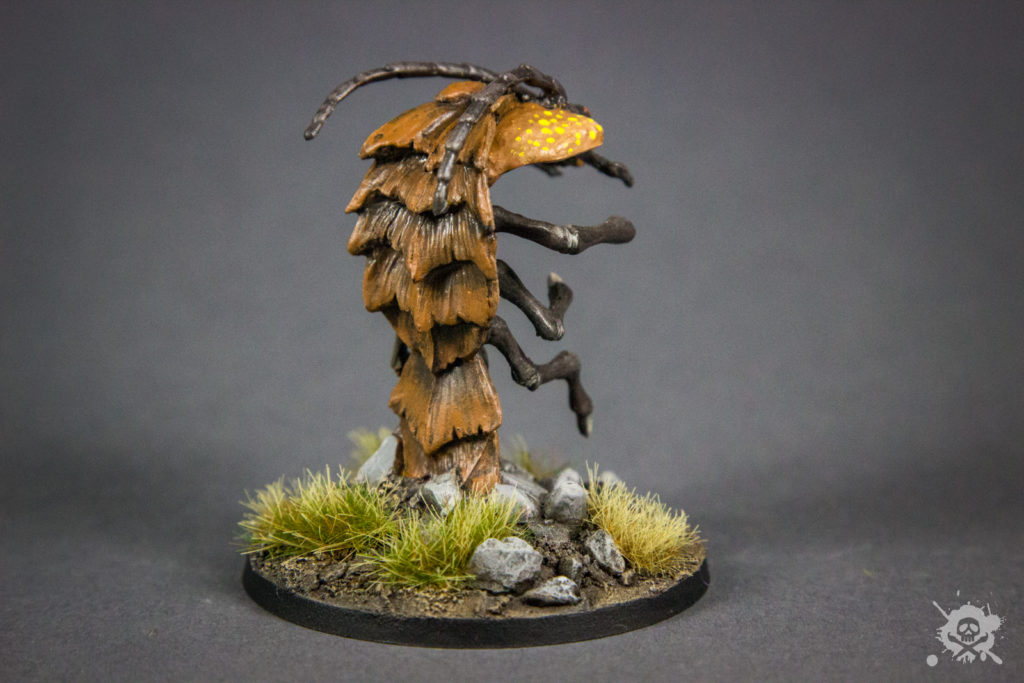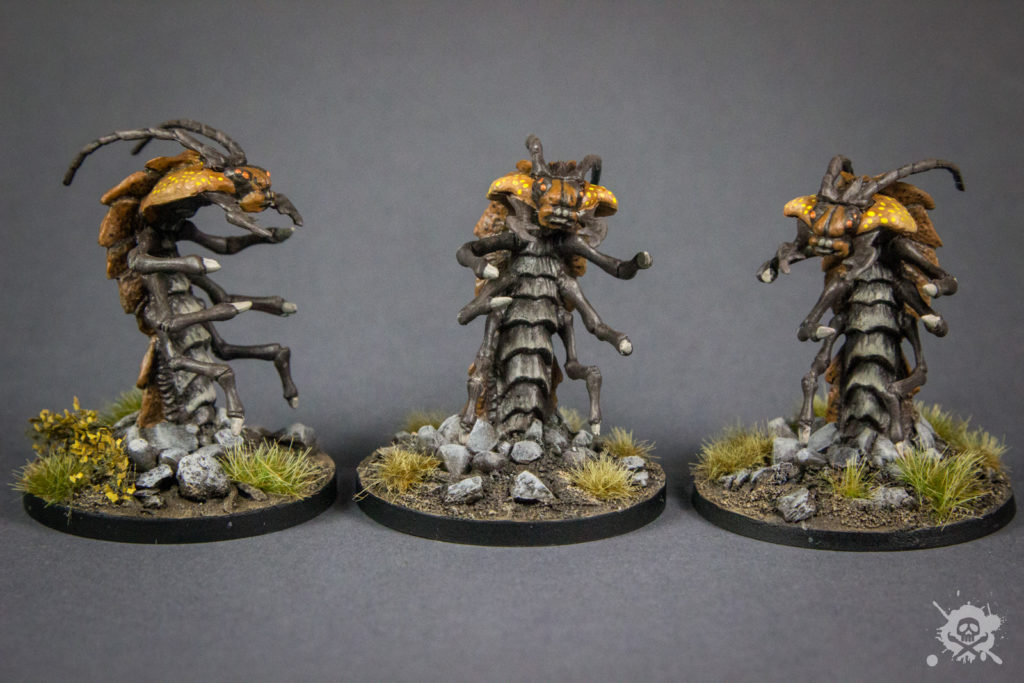
Ankheg (77230)
Ankhegs are insectoid monsters as big as a horse, they burrow underground, can detect vibrations in the earth, and spit acid when they are not attacking with their claws. In D&D, these beasts are interesting opponents in dungeons, caves or while travelling overland. I don’t exactly remember where I put an Ankheg encounter in the Storm King’s Thunder campaign, but it was definitely there. Reaper has some great Bones miniatures for these monsters, why not just take three of them?
The Ankheg (77230) from Reaper Miniatures was sculpted by Kevin Williams. These beasts were already part of the game in 1st edition, keeping their insectoid look throughout the editions. The Reaper miniature comes closed to the 2nd edition version.
I didn’t have any larger insects, worms or similar monstrosities in my collection, so the Ankheg was a great addition! As they are not too strong as a challenge, I bought three of the Reaper miniatures and used them as a group.
Basing and Priming
The miniatures have a nice base already, as the Ankhegs from Reaper burst out from a pile of rocks. I glued them on a large (2-inch) plastic base and decorated the base with even more small rocks and sand. Then, I primed them with my airbrush in black and white. They looked great, already!
Painting
I almost always paint the base first. This was also true for the Ankheg figures. I used Vallejo Flat Brown, Dark Earth, and Chocolate as a basecoat, then applied a black wash and finally added highlights by drybrushing with a mix of the browns with a beige color.
I then took quite a long time to decide the color scheme. I did not use the rust/orange brown tones from the 5th edition artwork in the monster manual for the whole figure. The artwork suggests that the colors for the creature are more of less the same for all parts. Instead, I used a dark brown for the main body and the reddish browns for the backplates. I also added a sprinkle of yellow dots on the head plate piece. This way, the figures are more colorful and have a nice contrast, I think.
Finally, I decorated the base with some vegetation. The green of the grass give a very nice additional contrast! Overall, I am very happy with how they turned out.
Latest Posts
- Best of Storm King’s Thunder December 6, 2022
- 3D print: Gargoyles by mz4250 November 13, 2022
- D&D Repaint: WizKids Empyrean (25B) November 9, 2022
- D&D Repaint: WizKids Empyrean (25A) November 4, 2022
- D&D Repaint: WizKids Cloud Giant (28A+28B) October 30, 2022

